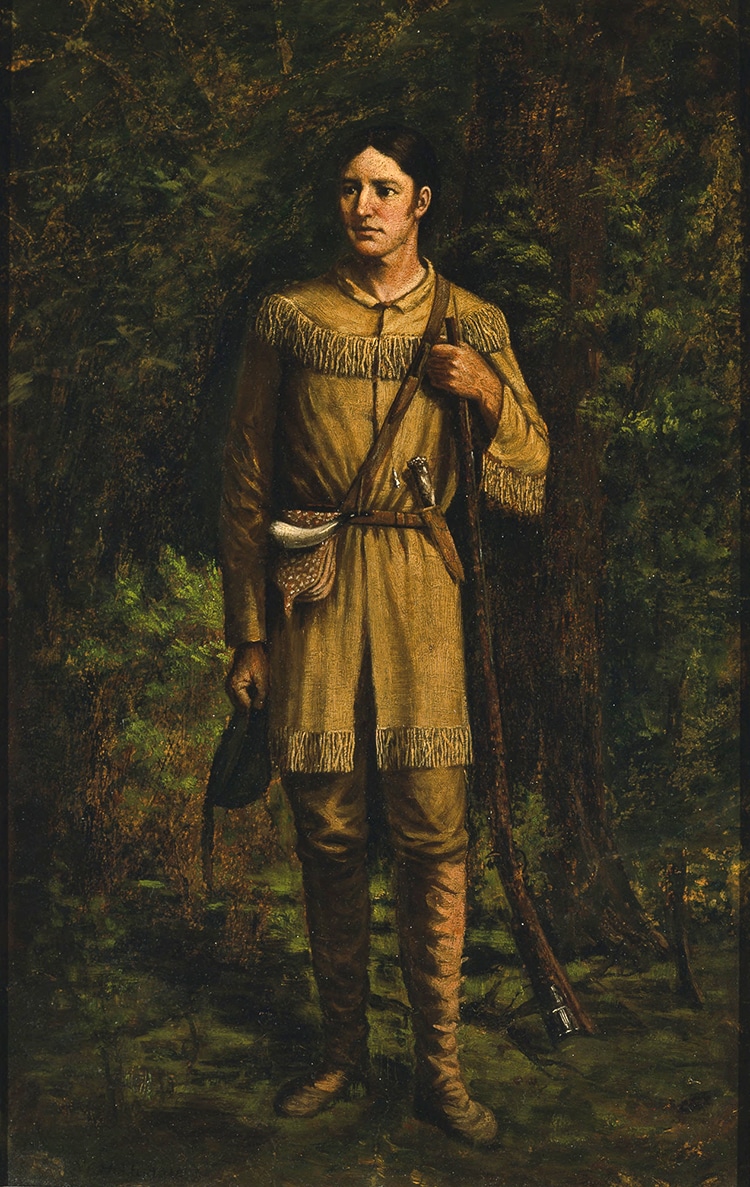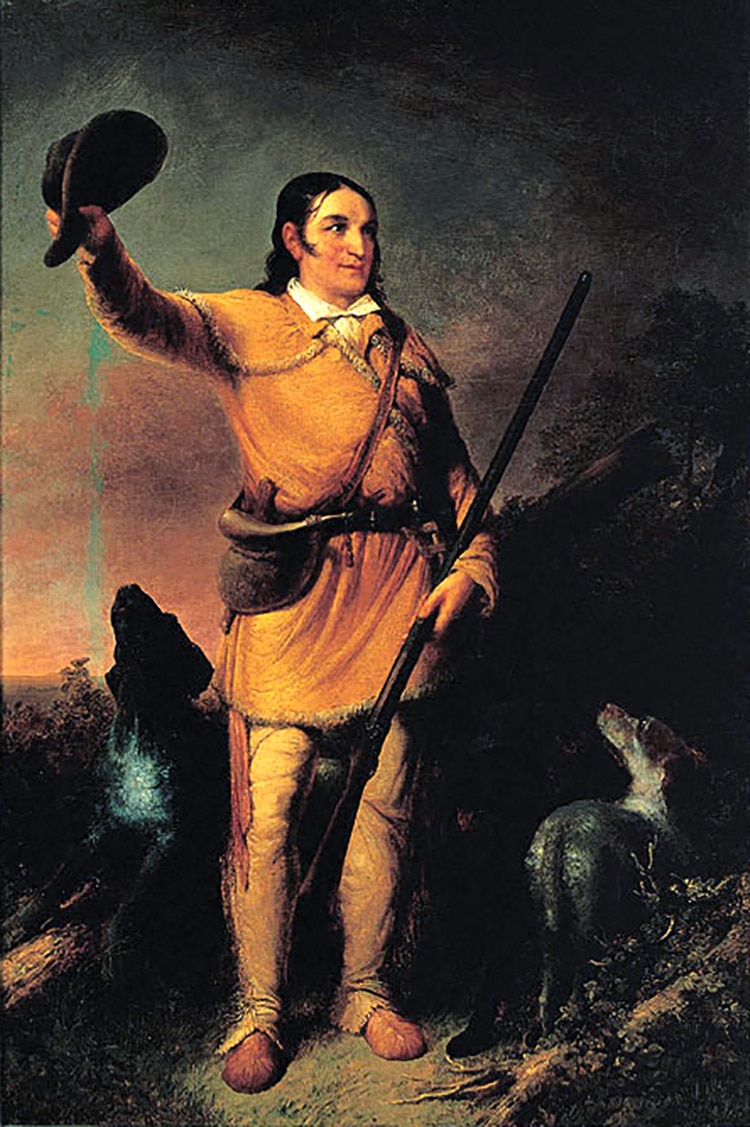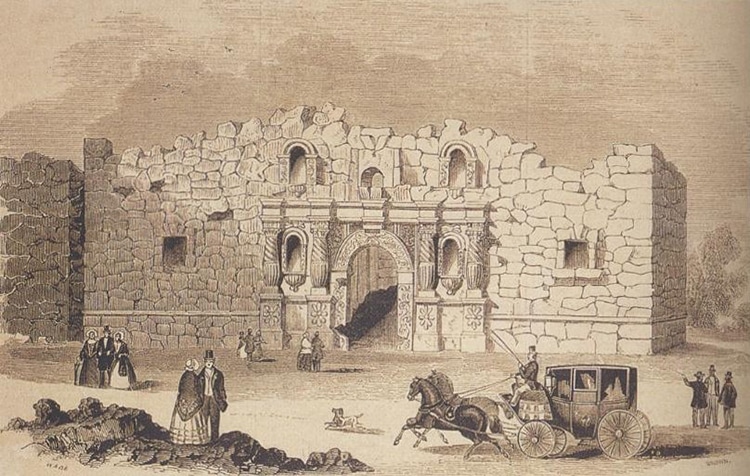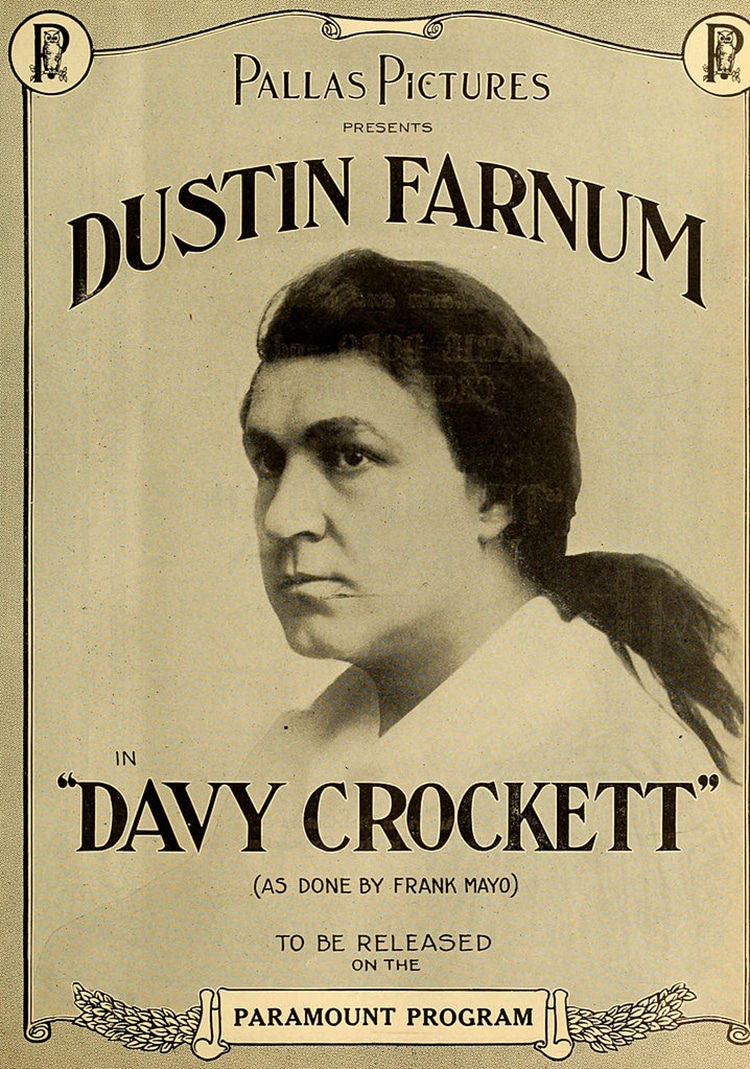
Oil painting of Davy Crockett on masonite by William Henry Huddle (Photo: Dallas Museum of Art, The Karl and Esther Hoblitzelle Collection, gift of the Hoblitzelle Foundation [Public Domain])
The Crocketts
Davy (David) Crockett was born on August 17, 1786 in eastern Tennessee to John and Rebecca Crockett. One of nine children, Davy’s early life was often spent working in servitude to pay off his family’s debts. Ever the frontiersman, Davy lived and breathed the wilderness, helping his family survive in the backwoods of the Tennessee countryside. He married Mary Finley on August 14, 1806, and the two of them had three children. In 1813, he enlisted in the Tennessee militia and participated in fights against the Native populations. It was as a scout in the militia that he witnessed the massacre of Indigenous peoples at Tallushatchee—perhaps contributing to his later rebuke of Andrew Jackson’s proposed Indian Removal Bill in 1830.

Portrait of Davy Crockett; Oil on canvas (Photo: Wikimedia Commons [Public Domain])
The Texas War for Independence and the Alamo

1854 Drawing of The Alamo Mission (Photo: Wikimedia Commons [Public Domain])
On February 23, 1836, Mexican forces led by General Antonio Lopez de Santa Anna laid siege to the Texas-owned mission-turned-fort, The Alamo. The Alamo's mere 200 Texan defenders were far outnumbered by the massive Mexican army, but withheld bombardments for 13 days before being overpowered. Davy Crockett, who had arrived at the mission in early February is known to have died during the siege, though accounts vary as to whether he died before the mission was overpowered or was taken hostage and then executed once it had been seized. Cries to “Remember the Alamo” rang throughout the Texas landscape and fueled the fires for independence. To this day, the Alamo Mission stands as a testament of bravery and heroics for Texans everywhere.
Legacy
Crockett’s heroic death at the Alamo Mission in 1836 only encouraged the growing mythos surrounding the frontiersman. Prior to his death, a play called The Lion of the West by James Kirke Paulding, premiered in 1831. Initially Crockett hated how the main character, Colonel Nimrod Wildfire, was a caricature of himself; but, after the play grew popular, he embraced the artistic homage and publicly attended a production in December 1833.
Capitalizing on the American fable that Davy Crockett was becoming, a series of fifty almanacs were published between 1835-1856. These almanacs kept Crockett’s life in the public consciousness, and his appearances in colorful comic books in the 20th century kept kids everywhere fascinated by his story. He was even featured in early film adaptations, like the 1916 film by Pallas Pictures, simply titled Davy Crockett. However, it was Walt Disney’s interpretation of Davy Crockett’s life that made him the pop culture icon he is today.

“Davy Crockett” Pallas Pictures 1916 Film Poster (Photo: Wikimedia Commons [Public Domain])
Other films have taken a stab at bringing Davy Crockett’s story to life, but none have been able to replicate the magic of that mid-century summer. John Wayne’s portrayal in The Alamo (1960) is often forgotten in favor of his roles in other westerns like True Grit. While Billy Bob Thornton’s depiction in 2004’s The Alamo is more historically accurate than his Disney predecessor's, his Davy Crockett did not surpass the fame of Fess Parker’s famous “Davy Crockett, king of the wild frontier.”
In life and death, Davy Crockett was seen as an American icon; but in 1956, he became the folk hero we know him as today.
Related Links:
How the Hudson River School Became America’s First Art Movement
Interview: Expressive Paintings of Native Americans in Authentic Dress
Moulin Rouge: Explore the Dazzling History of Paris’ Most Celebrated Cabaret






















































































